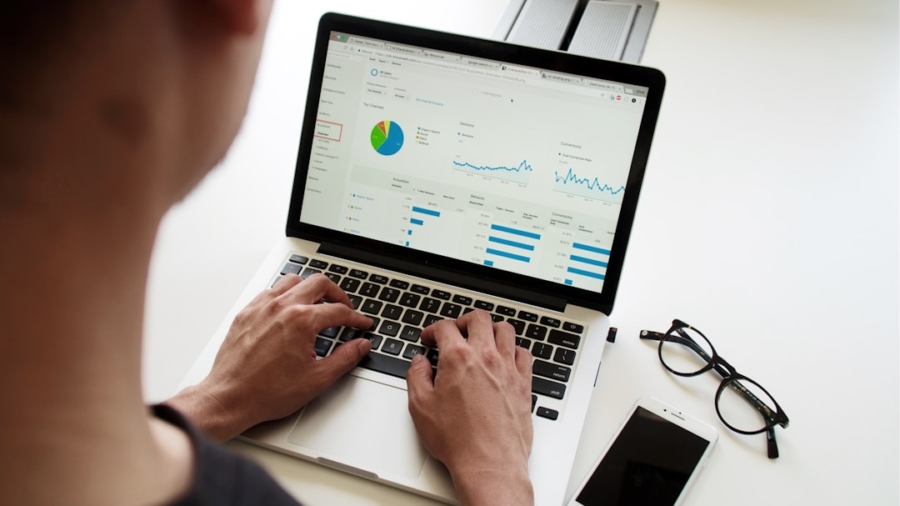In the contemporary landscape of commerce, the intersection of big data and consumer spending behavior has emerged as a pivotal area of study. Big data refers to the vast volumes of structured and unstructured data generated every second from various sources, including social media, online transactions, and mobile applications. This data is characterized by its high velocity, variety, and volume, making it a treasure trove for businesses seeking to understand consumer preferences and spending habits.
As consumers increasingly engage with digital platforms, their behaviors leave behind a digital footprint that can be analyzed to glean insights into their purchasing decisions. Understanding consumer spending behavior is crucial for businesses aiming to tailor their marketing strategies and product offerings. By analyzing patterns in consumer data, companies can identify trends, predict future spending, and enhance customer experiences.
The ability to harness big data not only allows businesses to optimize their operations but also enables them to create personalized marketing campaigns that resonate with individual consumers. As we delve deeper into the significance of big data in this context, it becomes evident that the implications extend beyond mere business strategy; they touch upon the very fabric of economic dynamics in a data-driven world.
Key Takeaways
- Big data plays a crucial role in understanding consumer spending behavior and patterns.
- The collection and analysis of big data are essential in predicting consumer spending habits and trends.
- Machine learning and artificial intelligence are key tools in accurately predicting consumer spending behavior.
- Successful case studies demonstrate the effectiveness of big data in predicting consumer spending.
- Ethical considerations and privacy concerns must be addressed when using big data to predict consumer spending.
The Importance of Big Data in Understanding Consumer Behavior
Unlocking Consumer Preferences
Big data provides insights into consumer preferences, enabling companies to segment their markets more effectively.
Real-Time Analysis for Swift Decision-Making
Moreover, big data facilitates real-time analysis, which is essential in a fast-paced market environment. Companies can track consumer behavior as it happens, allowing them to respond swiftly to emerging trends or shifts in preferences. For example, during a sudden spike in demand for a particular product category—such as fitness equipment during a global health crisis—businesses can adjust their supply chains and marketing strategies almost instantaneously.
Driving Sales and Profitability
This agility not only enhances customer satisfaction but also drives sales and profitability. By leveraging big data, businesses can stay ahead of the competition, respond to changing market conditions, and ultimately, achieve long-term success.
How Big Data is Collected and Analyzed to Predict Consumer Spending

The collection and analysis of big data involve a multifaceted approach that encompasses various methodologies and technologies. Data is gathered from numerous sources, including online transactions, social media interactions, customer feedback, and even IoT devices. For instance, e-commerce platforms track user behavior through cookies and tracking pixels, capturing data on browsing habits, purchase history, and even abandoned shopping carts.
This wealth of information is then aggregated into databases that can be analyzed for patterns and insights. Once collected, the data undergoes rigorous analysis using advanced analytical tools and techniques. Businesses employ statistical methods and algorithms to sift through vast datasets, identifying correlations and trends that may not be immediately apparent.
Predictive analytics plays a crucial role in this process; by applying historical data to current trends, companies can forecast future consumer spending behavior with remarkable accuracy. For example, a retailer might analyze past sales data alongside economic indicators to predict how seasonal changes will impact consumer spending in the upcoming months.
The Role of Machine Learning and Artificial Intelligence in Predicting Consumer Spending Behavior
Machine learning (ML) and artificial intelligence (AI) have revolutionized the way businesses predict consumer spending behavior. These technologies enable companies to process large datasets more efficiently and derive actionable insights with greater precision. Machine learning algorithms can identify complex patterns within consumer data that traditional analytical methods might overlook.
For instance, clustering algorithms can segment consumers into distinct groups based on their purchasing behaviors, allowing for targeted marketing strategies. AI enhances this predictive capability by simulating human decision-making processes. Through natural language processing (NLP), AI can analyze customer reviews and social media sentiment to gauge public perception of products or brands.
This qualitative data complements quantitative analysis, providing a holistic view of consumer attitudes. Furthermore, AI-driven recommendation systems—such as those used by streaming services or e-commerce platforms—leverage user behavior data to suggest products or content tailored to individual preferences, thereby influencing spending decisions.
Case Studies: Successful Examples of Big Data Predicting Consumer Spending
Several companies have successfully harnessed big data to predict consumer spending behavior, leading to significant business growth and enhanced customer engagement. One notable example is Amazon, which utilizes sophisticated algorithms to analyze customer purchase history and browsing behavior. By employing collaborative filtering techniques, Amazon can recommend products that align with individual preferences, resulting in increased sales conversions.
This personalized shopping experience not only boosts customer satisfaction but also fosters brand loyalty. Another compelling case is Target’s use of predictive analytics to anticipate consumer needs. The retail giant famously developed a pregnancy prediction model that analyzed purchasing patterns to identify expectant mothers based on their shopping habits.
By targeting these customers with tailored marketing campaigns—such as sending coupons for baby products—Target was able to capture a significant share of the market for new parents. This strategic use of big data not only increased sales but also demonstrated the power of predictive analytics in understanding consumer behavior.
Ethical Considerations and Privacy Concerns in Using Big Data for Predicting Consumer Spending

Privacy Concerns and Lack of Transparency
The collection of personal data raises important questions about consent and transparency. Consumers may be unaware of how their information is being used or shared, leading to a lack of awareness and potential distrust between consumers and businesses. This distrust can ultimately damage brand reputation and erode customer loyalty.
The Risks of Data Misuse
Moreover, the potential for misuse of data poses significant risks. Companies must navigate the fine line between leveraging consumer insights for business advantage and respecting individual privacy rights. Regulatory frameworks such as the General Data Protection Regulation (GDPR) in Europe have been established to protect consumer data and ensure ethical practices in data collection and usage.
The Need for Robust Data Governance
To mitigate these risks, businesses must adopt robust data governance policies that prioritize transparency and accountability while still harnessing the power of big data analytics. By doing so, companies can ensure that they are using data in a responsible and ethical manner, maintaining customer trust and loyalty while driving business growth.
The Future of Big Data in Predicting Consumer Spending Behavior
Looking ahead, the future of big data in predicting consumer spending behavior appears promising yet complex. As technology continues to evolve, we can expect advancements in data collection methods and analytical techniques that will further enhance predictive capabilities. The integration of real-time analytics with emerging technologies such as blockchain could provide even greater transparency and security in transactions, fostering consumer trust.
Additionally, as consumers become more aware of their digital footprints, there will likely be an increased demand for ethical data practices. Businesses that prioritize responsible data usage will not only comply with regulations but also build stronger relationships with their customers. The rise of privacy-centric technologies may lead to new models of consumer engagement where individuals have greater control over their personal information while still benefiting from personalized experiences.
The Impact of Big Data on Consumer Spending and the Economy
The impact of big data on consumer spending behavior is profound, shaping not only individual purchasing decisions but also broader economic trends. As businesses continue to leverage big data analytics to understand consumer preferences, they are better equipped to meet market demands and drive innovation. This dynamic interplay between data-driven insights and consumer behavior ultimately influences economic growth by fostering competition and enhancing efficiency across industries.
In this evolving landscape, the challenge lies in balancing the benefits of big data with ethical considerations surrounding privacy and consent.
In a recent article discussing the role of big data in predicting consumer spending behavior, it was highlighted how advancements in marketing technologies are shaping the future of consumer insights. This aligns with another interesting read on this article, businesses can gather valuable data to analyze consumer behavior and preferences, ultimately improving their predictive capabilities.
FAQs
What is big data?
Big data refers to large and complex data sets that are difficult to process using traditional data processing applications. It encompasses a wide variety of data types, including structured, unstructured, and semi-structured data.
How is big data used in predicting consumer spending behavior?
Big data is used in predicting consumer spending behavior by analyzing large volumes of data from various sources, such as social media, online transactions, and demographic information. This analysis helps businesses identify patterns and trends in consumer behavior, which can be used to make more accurate predictions about future spending habits.
What are the benefits of using big data in predicting consumer spending behavior?
Using big data in predicting consumer spending behavior allows businesses to gain valuable insights into consumer preferences, trends, and purchasing patterns. This information can be used to tailor marketing strategies, improve product offerings, and enhance customer experiences, ultimately leading to increased sales and customer satisfaction.
What are some challenges associated with using big data in predicting consumer spending behavior?
Challenges associated with using big data in predicting consumer spending behavior include data privacy concerns, data security issues, and the need for advanced analytics tools and expertise. Additionally, ensuring the accuracy and reliability of the data used for analysis can be a challenge.
How can businesses effectively leverage big data for predicting consumer spending behavior?
Businesses can effectively leverage big data for predicting consumer spending behavior by investing in advanced analytics tools and technologies, hiring data science professionals, and ensuring compliance with data privacy regulations. Additionally, businesses should focus on collecting high-quality data from diverse sources and using it to gain actionable insights into consumer behavior.

